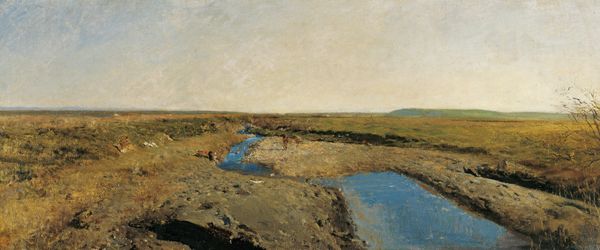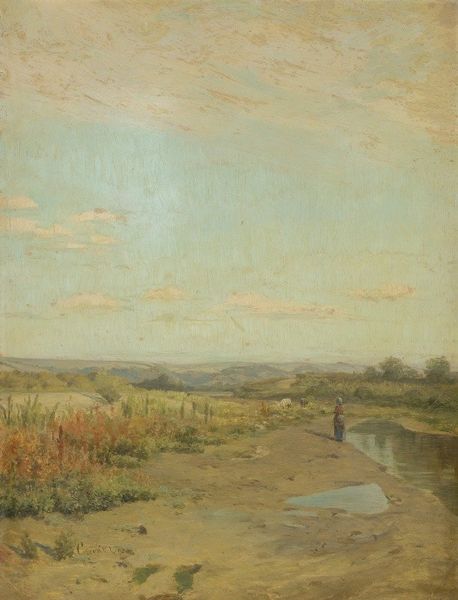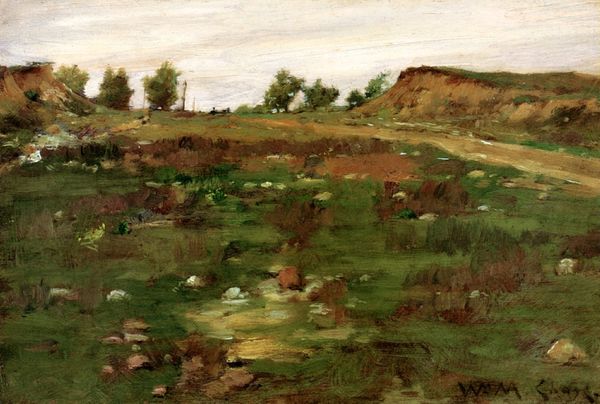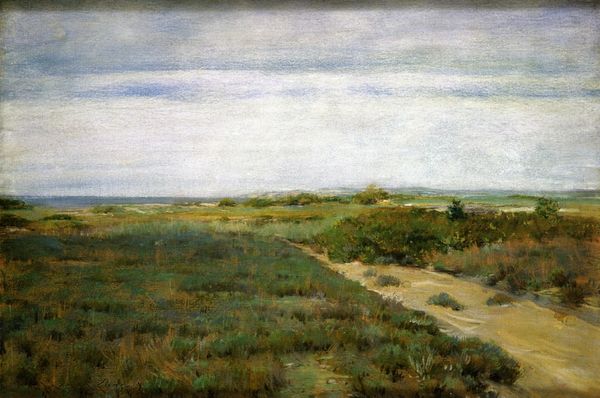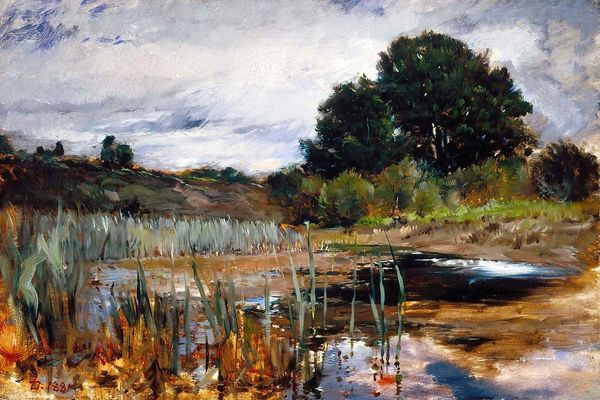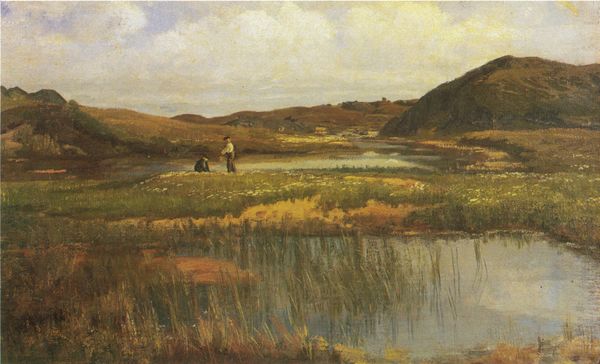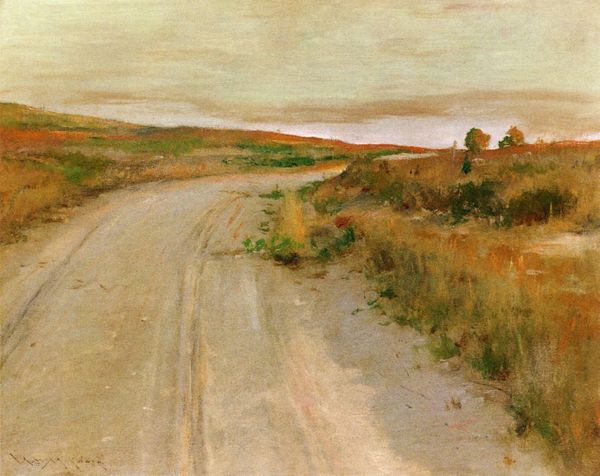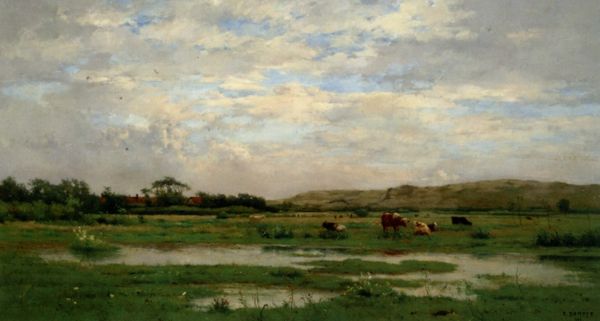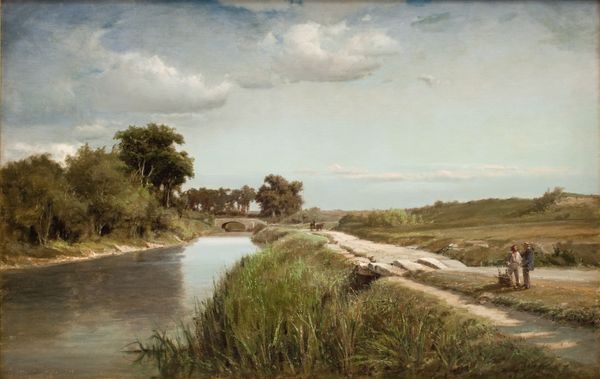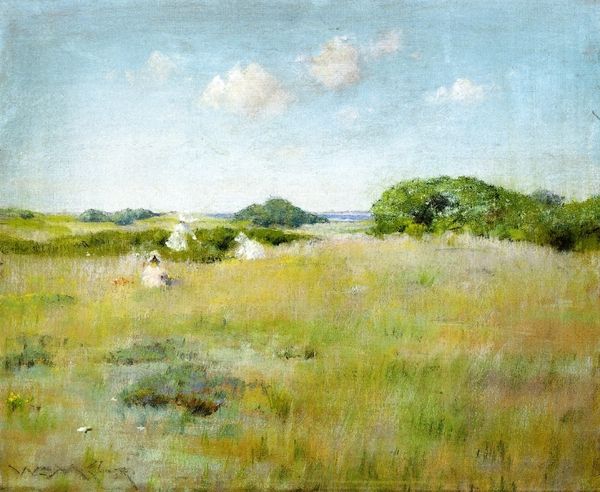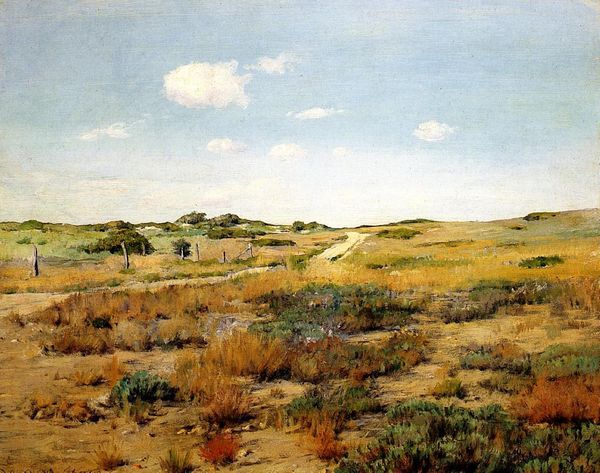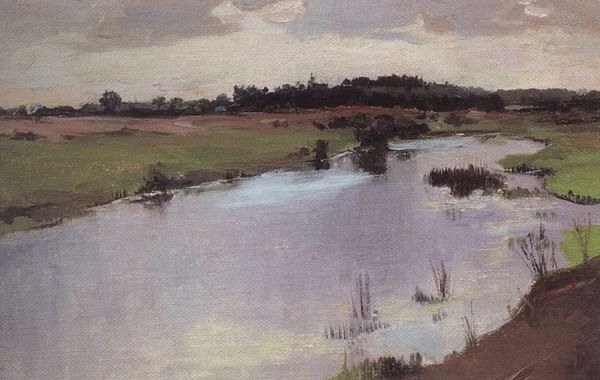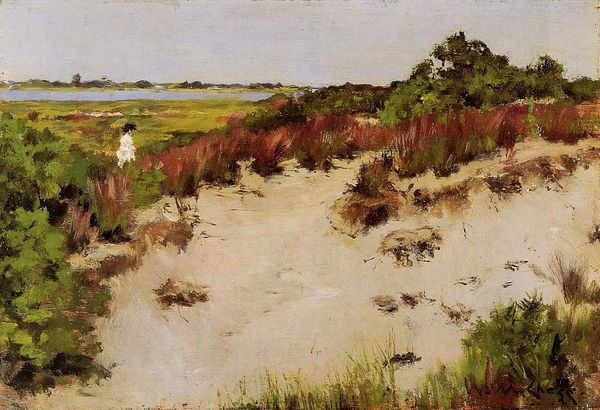
Copyright: Public domain
Curator: William Merritt Chase painted this scene, entitled "Swollen Stream at Shinnecock," around 1895. Editor: It evokes such a feeling of humid quiet, doesn't it? The way the colors blend… earthy greens and browns reflecting in the water, I feel as though I’m experiencing this marsh myself. Curator: Chase was quite taken with Shinnecock, Long Island; he even founded a summer school of art there. His turn to painting landscapes outdoors was certainly a challenge to academic artistic practice at the time. You feel the emphasis shift away from rigid representation toward experience, right? Editor: Absolutely, the carriage in the distance seems insignificant, the small boat anchored off to the left as well. All seem subservient to nature. To me, the swollen stream is the core, snaking toward us like an unblinking, critical eye. Water often stands for renewal and purification… Curator: Interesting you picked up on water so centrally, as its symbolic function is deeply tied to cultural practices of land usage and ownership, isn't it? Whose access is granted or denied by waterways such as this one, which has effectively flooded the path? I also see hints of urbanization with those human made objects; yet, nature takes center stage. It becomes less of a tranquil, pretty place if seen through the lens of competing access, right? Editor: That’s a solid and important reading! I can definitely sense tension, with the visual weight distributed very unevenly in the composition… What's the implication of a displaced route, how might it upend expectations, social mores and assumptions? I'm especially curious what emotional resonance waterways like this hold within indigenous narratives... Curator: It would certainly be enriching to explore how land has historically been taken for granted, perceived as "unowned" and thus free to be appropriated, a point made strongly in postcolonial ecocriticism. And Chase seems to have avoided depictions of people directly working the land, in the fields themselves—that also resonates... Editor: Right. Chase highlights a tension point without overtly judging. The painting serves more as a symbolic exploration of an intersection. For me, revisiting it, its muted earthiness still holds strong, but I'm more attentive to the possibility of displaced, perhaps even erased, memories and histories within it. Curator: Exactly. Considering those intersections adds a vital dimension to our understanding, enriching how we view seemingly straightforward landscapes of that era.
Comments
No comments
Be the first to comment and join the conversation on the ultimate creative platform.
